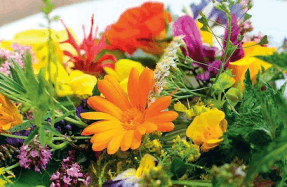Five-star plant selection

Part 5: Bulbs
PLANTS with bulbs, corms, tubers or other means of storing large reserves of food and moisture have developed this capacity to enable them to survive considerable periods without active growth. This can be a useful quality in the garden, for it means that while the bulbous-rooted plants are resting, other plants can take their place without undue competition between them.
For example, spring-flowering bulbs, such as daffodils, tulips and snowdrops, die down in early summer just as many herbaceous perennials, annuals and bedding plants are making their maximum growth and coming into flower, and so it is possible to mix these two types of plant without harm to either.
Another advantage of bulbs, especially
You’re reading a preview, subscribe to read more.
Start your free 30 days



